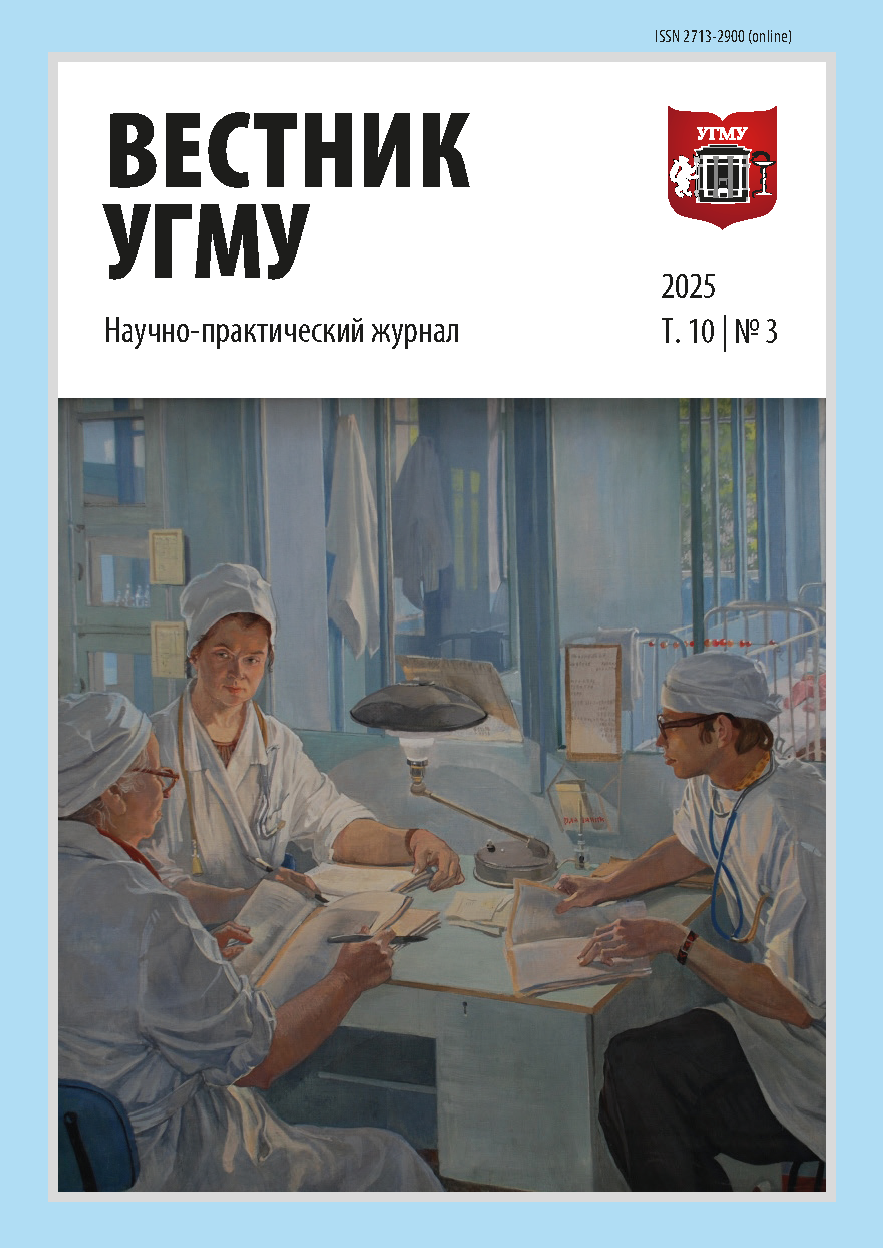Abstract
Critical care survivors may experience a combination of physical, emotional, cognitive, and social impairments, collectively known as post intensive care syndrome (PICS) in pediatrics, which makes it difficult for patients to recover to premorbid levels. Rehabilitation in intensive care (rehabilitation) is aimed at the prevention and treatment of the initial manifestations of PICS in the intensive care unit. Early initiation of rehabilitation plays a key role in the recovery process of patients undergoing intensive care for a long time. Unfortunately, this tactic is of little use to patients with severe burns. Burns are injuries caused by high-temperature, chemical, electrical, or radiation exposure to the body, which damages the skin and underlying tissues. With extensive thermal burns, a clinically pronounced general reaction of the body develops — burn disease, — and the functions of various organs and systems are disrupted. Burn disease has a certain cyclical course. According to the periodization adopted in the Russia, there are four periods of burn disease, each of which has its own manifestations and requires special treatment. Convalescence is the final period of burn disease, which begins after the restoration of the skin and lasts for several weeks and months before the restoration of the morphofunctional state of various organs and systems after a severe burn injury. It is during this period that rehabilitation is possible in severely burned children at the intensive care stage, however, it is difficult to carry out a full range of treatment strategies in patients with this pathology, taking into account the damage to the skin and the unacceptability of some treatment methods. The article presents the experience of rehabilitation by a multidisciplinary rehabilitation team (all staff of the Intensive Care Unit, neurologists, physiotherapists, physical therapy instructors, speech therapists, psychologists) in severely malnourished children. Despite the objective difficulties in carrying out rehabilitation measures, the accumulated experience convinces us of the need to find new opportunities for this category of patients in the form of an earlier start (prerehabilitation).
Acknowledgments
The authors would like to express their gratitude to the Children’s City Clinical Hospital No. 9 (Ekaterinburg), represented by its chief physician, I. P. Ogarkov, for the opportunity to provide treatment and rehabilitation for patients. We also wish to thank the Doctor of Sciences (Medicine) and Professor, the Chairman of the Supervisory Board of the Clinical Institute of the Brain (Beryozovsky), A. A. Belkin.
For citation
Savinov AK, Romanova LL. The experience of rehabilitation at the stage of intensive care in children with thermal trauma. USMU Medical Bulletin. 2025;10(3):e00177. (In Russ.). DOI: https://doi.org/10.52420/usmumb.10.3.e00177. EDN: https://elibrary.ru/LKTURN.
References
Woodruff AG, Choong K. Long-term outcomes and the post-intensive care syndrome in critically ill children: A North American perspective. Children. 2021;8(4):254. DOI: https://doi.org/10.3390/children8040254.
Белкин АА. Синдром последствий интенсивной терапии (ПИТ-синдром). Вестник интенсивной терапии. 2018;(2):12–23. [Belkin AA. Syndrome effects of intensive therapy — post intensive care syndrome (PICS). Annals of Critical Care. 2018;(2):12–23. (In Russ.)]. DOI: https://doi.org/10.21320/1818-474X-2018-2-12-23.
Choong К. Post-intensive care syndrome — the paediatric perspective. ICU Management & Practice. 2020;20(4):288–291. Available from: https://clck.ru/3PEiVQ (accessed 20 July 2025).
Knoester H, Bronner MB, Bos AP, Grootenhuis MA. Quality of life in children three and nine months after discharge from a paediatric intensive care unit: A prospective cohort study. Health and Quality of Life Outcomes. 2008;6:21. DOI: https://doi.org/10.1186/1477-7525-6-21.
Dow BL, Kenardy JA, Le Brocque RM, Long DA. The diagnosis of posttraumatic stress disorder in school-aged children and adolescents following pediatric intensive care unit admission. Journal of Child and Adolescent Psychopharmacology. 2013;23(9):614–619. DOI: https://doi.org/10.1089/cap.2013.0044.
Herrup AE, Wieczorek B, Kudchadkar SR. Characteristics of post-intensive care syndrome in survivors of pediatric critical illness: A systematic review. World Journal of Critical Care Medicine. 2017;6(2):124–134. DOI: https://doi.org/10.5492/wjccm.v6.i2.124.
Killien EY, Farris RWD, Watson RS, Dervan LA, Zimmerman JJ. Health-related quality of life among survivors of pediatric sepsis. Pediatric Critical Care Medicine. 2019;20(6):501–509. DOI: https://doi.org/10.1097/PCC.0000000000001886.
Разумовский АЮ. Детская хирургия: национальное руководство. 2-е изд., перераб. и доп. Москва: ГЭОТАР-Медиа; 2021. 1280 с. [Razumovsky AY (ed.). Pediatric surgery: National guidelines. 2nd ed., rev. and add. Moscow: GEOTAR-Media; 2021. 1280 p. (In Russ.)]. DOI: https://doi.org/10.33029/9704-5785-6-PSNR-2021-2-1-1280.
Алексеев АА, Лавров ВА. Ожоговая болезнь: патогенетические принципы и методы лечения. Анналы хирургии. 1996;(3):24–28. [Alekseev AA, Lavrov VA. Burn disease: Pathogenetic principles and treatment methods. Russian Annals of Surgery. 1996;(3):24–28. (In Russ.)].
Greenhalgh DG. Sepsis in the burn patient: A different problem than sepsis in the general population. Burns & Trauma. 2017;5:23. DOI: https://doi.org/10.1186/s41038-017-0089-5.
Sepsis in burns — lessons learnt from developments in the management of septic shock. Medicina. 2021;58(1):26. DOI: https://doi.org/10.3390/medicina58010026.
Шень НП. Ожоги у детей. Москва: Триада-Х; 2011. 148 с. [Shen NP. Burns in children. Moscow: Triada -X; 2011. 148 p. (In Russ.)].
Об организации оказания медицинской помощи по профилю «медицинская реабилитация» на первом этапе в условиях отделений реанимации и интенсивной терапии: приказ М-ва здравоохранения Свердл. обл. от 11 окт. 2022 г. № 2280-п [On the organization of medical care in the “medical rehabilitation” profile at the first stage in intensive care units: Order of the Ministry of Health of the Sverdlovsk Region dated 11 October 2022 No. 2280-p (In Russ.)]. Available from: https://clck.ru/3PEmk5 (accessed 20 July 2025).
Лейдерман ИН, Белкин АА, Рахимов РТ, Липовка НС, Белкин ВА. (2018). Особенности нутритивного статуса и белково- энергетического обмена у пациентов, перенесших критическое состояние церебрального генеза, на этапе ОАРИТ специализированного центра медицинской реабилитации. Вестник уральской медицинской академической науки. 2018;15(1):12–19. [Leiderman IN, Belkin AA, Rakhimov RT, Lipovka NS, Belkin VA. Features of nutritional status and protein-energy metabolism in patients who have undergone a critical condition of cerebral origin at the stage of OARIT of a specialized medical rehabilitation center. Journal of the Ural Medical Academic Science. 2018;15(1):12–19. (In Russ.)]. DOI: https://doi.org/10.22138/2500-0918-2018-15-1-12-19.
This work is licensed under a Creative Commons Attribution-NonCommercial-ShareAlike 4.0 International License
Copyright © 2025 Savinov A. K., Romanova L. L.





